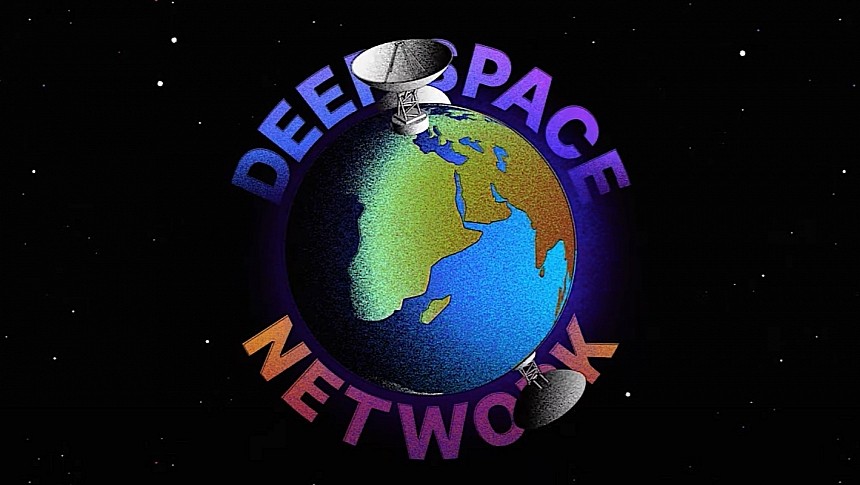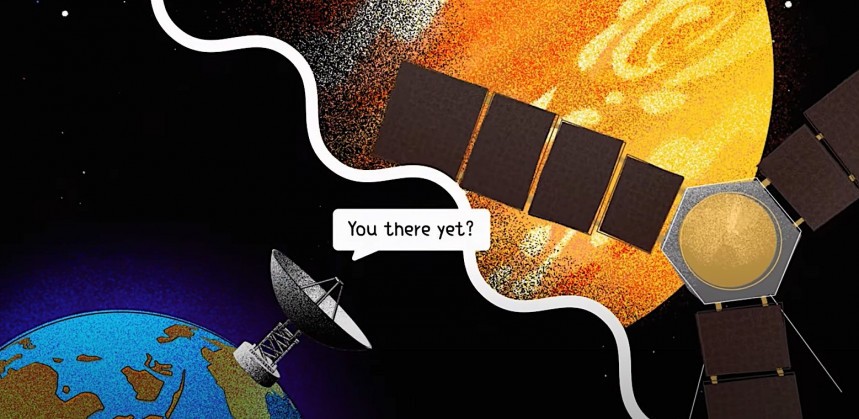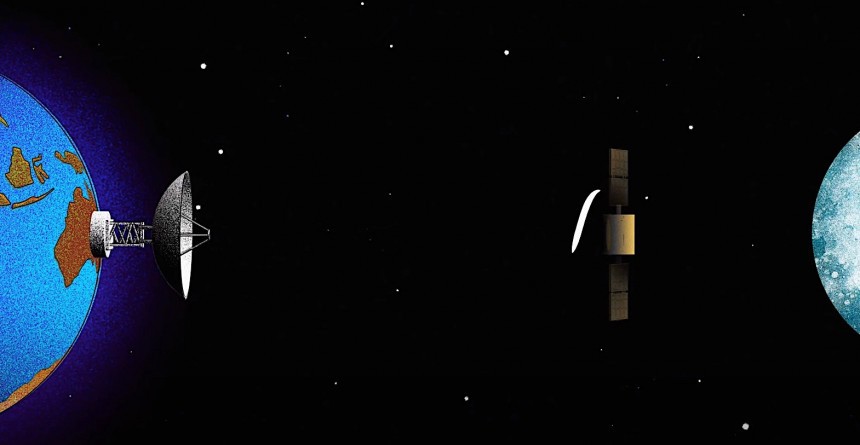Despite the many trivial things that keep us occupied here on Earth, humanity is slowly reaching out into space as it seeks to spread its influence beyond the confines of our own planet. And there's no better proof of that than the many space missions that are currently ongoing.
Our planet has around 77 space agencies. NASA, the largest of them all, is the driving force beyond humanity's expansion into space, as it has no less than 100 active missions at the time of writing. More than 40 of them are handled through something called Deep Space Network (DSN).
And by handled, I mean these missions, including the most important ones of our time (the James Webb Space Telescope, the Perseverance Mars rover, and the Artemis program), are getting tracked, commanded, and can send science data back thanks to this thing.
The DSN is a global communication network that traces its roots back to 1958. It was then that the U.S. Army requested the Jet Propulsion Laboratory (JPL) to use portable radio tracking stations in order to receive telemetry data from Explorer 1, America's first successfully launched satellite.
Because the idea worked, JPL was then tasked with coming up with a comms network that could link our planet to deep space missions – something that was not a reality at the time, but the great minds of the era knew was coming.
JPL did exactly that, and the ground stations it developed, known as the Deep Space Information Facilities, were incorporated into the Space Flight Operations Facility by the newly formed National Aeronautics and Space Administration.
That happened on December 24, 1963, and marked the official birth of the Deep Space Network. It also means that this Christmas Eve, the DSN turned 60 years old, having been in operation 24/7 during all this time.
Described as the "largest and most sensitive scientific telecommunications system in the world," the DSN presently comprises a total of 14 antennas divided between three locations on Earth: one in Goldstone, California, another in Canberra, Australia, and the third in Madrid, Spain.
These three locations are spaced about 120 degrees of longitude apart, and that allows the dishes to play a sort of relay race: when the spacecraft with which a part of the DSN talks to sink below the horizon as the planet rotates, and contact is lost, another DSN location picks up the conversation, ensuring continuous comms with deep space.
The system works on a follow-the-Sun basis, meaning each of the three stations takes turn controlling the entire network, passing the bar along when night reaches their respective regions.
All three DSN locations on this planet link and send their data through the Space Flight Operations Facility, known among the people working there as the Center of the Universe.
To mark the 60th anniversary of the comms network, NASA released last week a few details about what it plans for the future of the DSN.
Because it's of such crucial importance for space programs, the DSN will probably be around for as long as the many space programs are ongoing. The thing is, 60 years is a very long time, and the requirements of the current space missions begin to exceed the capabilities of the system.
Furthermore, the number of missions to be handled in the near future is expected to double, growing from 40 to 80 in a very short timeframe.
That's why NASA plans to upgrade the DSN with the installation of new dishes - it's unclear how many and where they will be installed – and the upgrading of the existing ones. Most importantly, though, NASA will try to complement the current way of talking to spacecraft with a new approach.
Currently, the DSN uses radio waves to talk to spacecraft, but if all works according to plan, NASA will also include laser communications on the menu.
To see if that's something that can be done the space agency recently used an instrument on the Psyche spacecraft for an impressive test. On its way to a namesake asteroid for a closer look, the spaceship shot back to Earth a laser beam, which despite the complexities of the maneuver (Psyche was 10 million miles/16 million km when it did that), was captured in California.
The tech demonstrated by Psyche is called Deep Space Optical Communications (DSOC), but it's too early to talk about its full deployment in the service of the DSN yet.
"The DSN is the heart of NASA – it has the vital job of keeping the data flowing between Earth and space," said in a statement Philip Baldwin, acting director of the network services division at NASA.
"But to support our growing portfolio of robotic missions, and now the human Artemis missions to the Moon, we need to push forward with the next phase of DSN modernization."
We'll probably get more updates on the changes to be made to the DSN in the coming months.
And by handled, I mean these missions, including the most important ones of our time (the James Webb Space Telescope, the Perseverance Mars rover, and the Artemis program), are getting tracked, commanded, and can send science data back thanks to this thing.
The DSN is a global communication network that traces its roots back to 1958. It was then that the U.S. Army requested the Jet Propulsion Laboratory (JPL) to use portable radio tracking stations in order to receive telemetry data from Explorer 1, America's first successfully launched satellite.
Because the idea worked, JPL was then tasked with coming up with a comms network that could link our planet to deep space missions – something that was not a reality at the time, but the great minds of the era knew was coming.
JPL did exactly that, and the ground stations it developed, known as the Deep Space Information Facilities, were incorporated into the Space Flight Operations Facility by the newly formed National Aeronautics and Space Administration.
That happened on December 24, 1963, and marked the official birth of the Deep Space Network. It also means that this Christmas Eve, the DSN turned 60 years old, having been in operation 24/7 during all this time.
These three locations are spaced about 120 degrees of longitude apart, and that allows the dishes to play a sort of relay race: when the spacecraft with which a part of the DSN talks to sink below the horizon as the planet rotates, and contact is lost, another DSN location picks up the conversation, ensuring continuous comms with deep space.
The system works on a follow-the-Sun basis, meaning each of the three stations takes turn controlling the entire network, passing the bar along when night reaches their respective regions.
All three DSN locations on this planet link and send their data through the Space Flight Operations Facility, known among the people working there as the Center of the Universe.
To mark the 60th anniversary of the comms network, NASA released last week a few details about what it plans for the future of the DSN.
Because it's of such crucial importance for space programs, the DSN will probably be around for as long as the many space programs are ongoing. The thing is, 60 years is a very long time, and the requirements of the current space missions begin to exceed the capabilities of the system.
That's why NASA plans to upgrade the DSN with the installation of new dishes - it's unclear how many and where they will be installed – and the upgrading of the existing ones. Most importantly, though, NASA will try to complement the current way of talking to spacecraft with a new approach.
Currently, the DSN uses radio waves to talk to spacecraft, but if all works according to plan, NASA will also include laser communications on the menu.
To see if that's something that can be done the space agency recently used an instrument on the Psyche spacecraft for an impressive test. On its way to a namesake asteroid for a closer look, the spaceship shot back to Earth a laser beam, which despite the complexities of the maneuver (Psyche was 10 million miles/16 million km when it did that), was captured in California.
The tech demonstrated by Psyche is called Deep Space Optical Communications (DSOC), but it's too early to talk about its full deployment in the service of the DSN yet.
"The DSN is the heart of NASA – it has the vital job of keeping the data flowing between Earth and space," said in a statement Philip Baldwin, acting director of the network services division at NASA.
"But to support our growing portfolio of robotic missions, and now the human Artemis missions to the Moon, we need to push forward with the next phase of DSN modernization."
We'll probably get more updates on the changes to be made to the DSN in the coming months.












